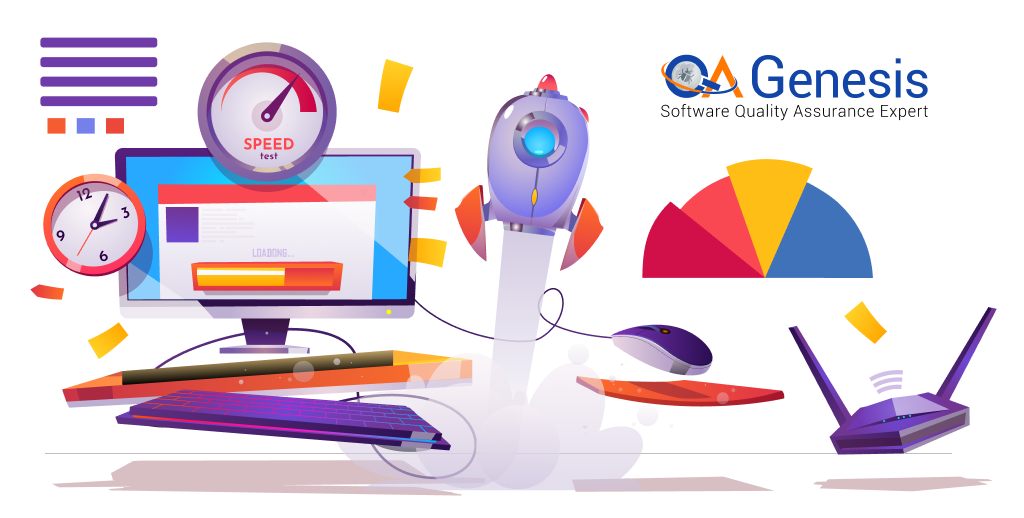When a particular software is developed completely and is ready to deploy on the server, the testing professionals perform load testing. Every website or application has a particular capacity for handling internet traffic. It is also known as the website load.
If the software is incapable of handling the incoming load, it will work very slowly. Furthermore, sometimes, the load is limited to servers also.
As the software load can impact performance, efficiency, and speed, running tests is essential. And this is done in a particular manner that can yield almost accurate results. Since this has become imperative for professionals to perform software testing for load, we have shed light on specific facts everyone should know.
How Software Load Testing Proves to be Efficient?
After completing software development, it is the duty of the professional to run a load test. Below we have listed down some of its advantages that will offer you more clarity.
1. Can Minimize System Downtime
According to several studies, many companies have lost millions of dollars just because of system downtime. It refers to a condition when the website or application is not available for the users.
It usually happens when the load increases beyond the limit. That’s why performing load testing will help one to determine the system downtime.
If the testing results are not impressive, developers will change the codes. This will help the software to work perfectly with reduced downtime.
2. Improves the Software Loading Time
With the application of proper software load testing techniques, you can improve the loading time. This means that once a user clicks on the URL, the application or website will load on the server within seconds.
If it fails to load quickly or the user has to wait for minutes for a page to open, it will automatically impact your business. For this reason, you must not overlook load testing.
3. Offers Greater Customer Satisfaction
Customer satisfaction depends on a few factors like the software’s performance, loading speed, etc. If you do not perform a load test, you won’t be able to know whether it is performing as per expectations or not. Thus, you won’t be able to impress your customers, no matter how charming and unique your services/products are.
4. Make Room for Scalability
Many companies make sure to use the best load testing tool to make room for scalability. This will help you check how well the application or website can adapt to new changes and upgrades. Furthermore, you also need to prevent that if the software is scaled, what kind of impact will be there on the load time, downtime, speed, etc.
5. Reduces the Failure Mitigation Costs
Thanks to the non-functional load tests, you can reduce the failure costs quickly. Let’s a load testing example where you haven’t run the tests properly. And after uploading it on the server, the website performed in unexpected manners due to incorrect codes. Hence, you will need developers who can debug and fix the errors. Therefore, the project budget will increase further. That’s why performing a load test is very crucial.
6. Helps in Establishing the SLAs
With the help of load testing, software engineers can know the type of hardware, framework, or tool needed. Therefore, it becomes easier for them to form a plan where they can mention all the prerequisites. These will tell them whether the developed software can handle the proper load or not. Hence, establishing the service level agreements with the client will become much more accessible and hassle-free.
How is Load Testing Performed on a Developed Software?
Learning how to do load testing properly is very important. As a result, you will evaluate whether the software is ready to deploy on the server. So, here’s how the process goes:
- First of all, the development must be completed. If you are following the agile technique, run the functional and performance testing first.
- Once done, you can start with setting up the software load testing framework.
- You must define proper criteria against which you must test the app or website. For example, let’s say you want to test one app against performance only while another one must be tested against loading speed and scalability.
- After this, the test steps need to be planned. In this phase, the software engineers design the test flows using several tools.
- They also create virtual users. This way they can have an insight into how the real-time users will believe. After all, the loading test results might not be up to the mark.
- Following this, you need to start testing the scenarios. Every scenario needs to be run separately and more efficiently.
- You must record all the results for future analysis. This will help you to ensure that the software is truly ready for deployment.
Final Thoughts
In this article, we have explained everything you must know about load testing. However, seeing how important it is, you shouldn’t ignore the testing scenario. With proper and impressive results, you won’t have to delay in uploading the software on a dedicated server.
